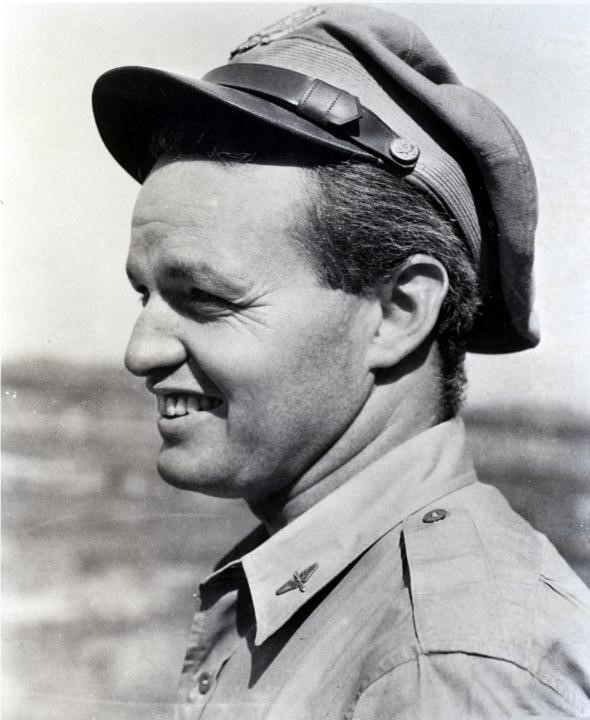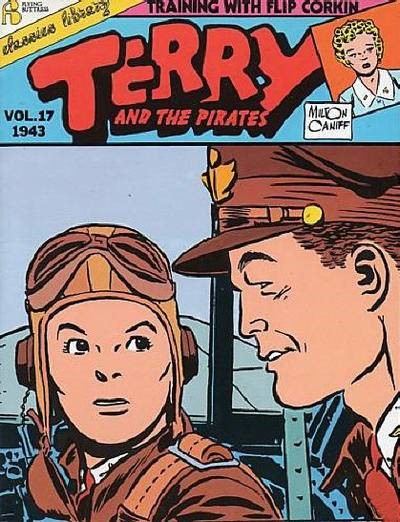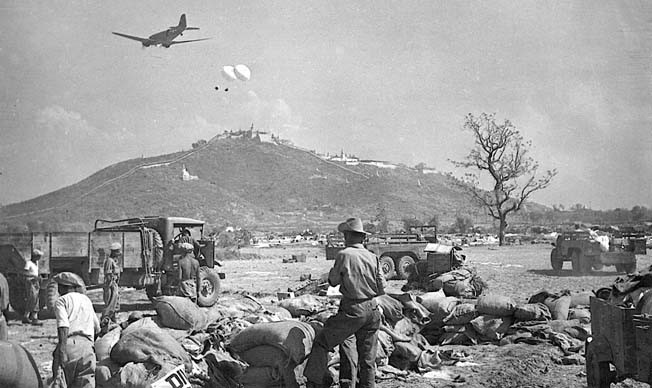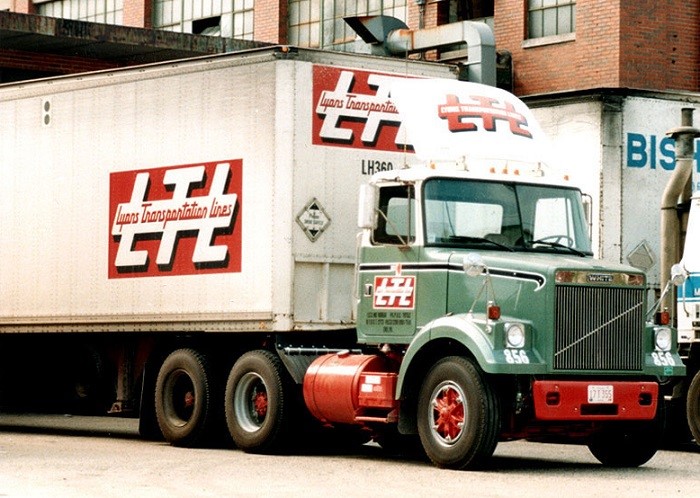
Philip Gerald Cochran was born in Erie in 1910. As an officer in the U.S. Army Air Corps, later Army Air Force, Cochran developed air combat, air transport and air assault methods during World War II that revolutionized operations, especially in the China-Burma-India (CBI) theater.
A 1935 graduate of Ohio State University, Cochran joined the Army Air Corps that year because “it looked like a good way to make an easy living.” In 1941, Cochran asked cartoonist Milt Caniff to design the insignia for his unit, the 65th Aggressor Squadron. After spending time with Cochran’s squadron, Caniff thought they would make good characters for the comics. Caniff used Cochran as his model for “Flip Corkin” in the Terry and the Pirates comic strip and later modeled the character “General Philerie,” a play on Cochran’s first name and his hometown of Erie, Pennsylvania, after him in the comic strip Steve Canyon.

In the early months of World War II, Cochran, now a Lieutenant Colonel, led the 33rd Fighter Group in North Africa. It was known as “The Joker Squadron” because it had been designated “J Squadron.” Though a fighter squadron Cochran flew the lead C-47 transport plane, dropping American paratroopers to destroy the El Djem bridge in Tunisia. The drop was a failure. Cochran got lost in the darkness and most of the paratrooper were killed or captured. In North Africa, however, Cochran developed a solid reputation and had little regard for superior officers he thought were getting in his way. He returned to the U.S. to command the XII Training Command and trained new pilots, including the 99th Fighter Squadron, the famed “Tuskegee Airmen,” an all-black unit. In spite of clashes with French General Henri Giraud over the use of air power instead of ground forces, Cochran was awarded the Croix de Guerre by the French government.
It was in the CBI that Cochran made his reputation. Commanding the 1st USSAF Commando Group, he developed air tactics in support of the British Army’s “Chindits,”a mixed Indian and British unit who were invading Japanese held Burma. Cochran developed a method of rescuing British soldiers from deep in the jungles of Burma by picking a glider up with a tailhook on a C-47 and whisking it off to safety. When he watched a demonstration of the method, Allied Theater commander, Admiral Lord Louis Mountbatten is said to have exclaimed “Jesus Christ All Bloody Mighty!” Cochran’s command continued to support both air and ground offensives, helping to raise the morale of long-range British ground forces operating deep in the remote Burmese jungles. Lord Mountbatten summed up Cochran’s accomplishments saying, “My boy, you are the only ray of light in this theater this year.”

After the war ended in 1945, Cochran returned to the United States and left the Army Air Force as a colonel. In the 1945 war movie Objective, Burma, starring Errol Flynn, Cochran is mentioned by name and is shown in newsreel footage. He acted as director of the arial scenes in the Howard Hughes film Jet Pilot (1957) starring John Wayne and Janet Leigh.
Retuning home to Erie, Cochran joined his brother John’s company, Lyons Transportation Lines (LTL), a trucking firm and eventually became its Chairman of the Board. In the early 1960s he dated actress Betty White but was most noted for his work with charitable organizations and was a long-time supporter of Erie’s Gannon University. Phil Cochran died of a heart attack while fox hunting in Geneseo, New York, in 1979. He is buried in Trinity Cemetery.

